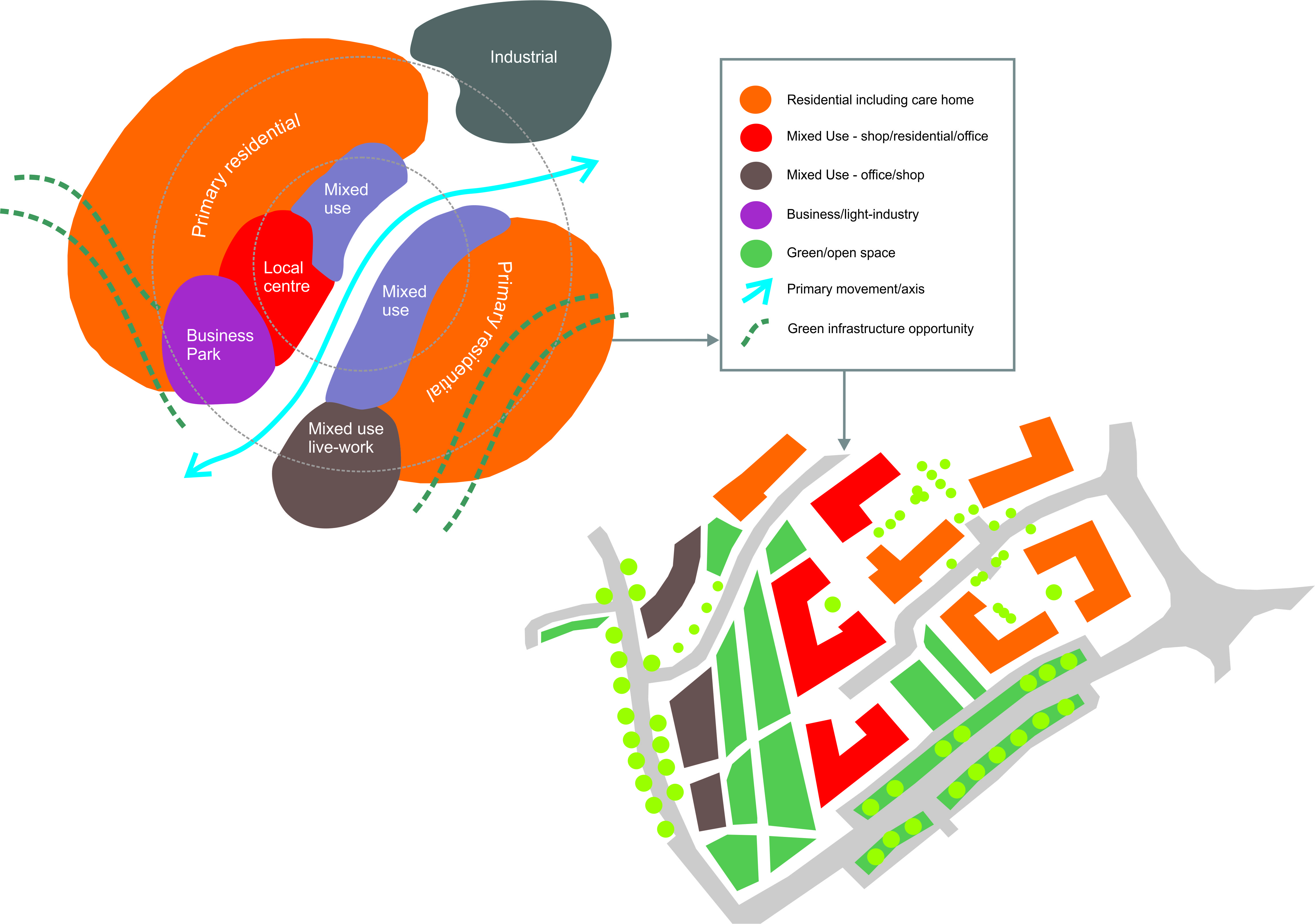Uses and activities within a residential development often determine the vitality of an area and the life of the place. A mix of uses will always be appropriate within the context of a large development but also within smaller scale development from streets to even individual buildings. Where a mix does not already exist, it can be introduced as a means to regenerate or revitalise the neighbouring area or wider context.

Mix, uses and activities plan progression
'...encourage multiple benefits from both urban and rural land, including through mixed use schemes and taking opportunities to achieve net environmental gains – such as developments that would enable new habitat creation or improve public access to the countryside'; NPPF Para 118.
Different uses need to work together well, be in the right place and have users to support them. Uses should be located to complement current and future patterns of movement. Providing abroad mix of tenures and types of dwelling makes a development accessible to the widest range of people, and is key to supporting a sustainable neighbourhood. Developments should accommodate a mix of residents regardless of location, and should appeal to a wide age range.
' Planning policies and decisions should aim to achieve healthy, inclusive and safe places which:
a) promote social interaction, including opportunities for meetings between people who might not otherwise come into contact with each other – for example through mixed-use developments, strong neighbourhood centres, street layouts that allow for easy pedestrian and cycle connections within and between neighbourhoods, and active street frontages;
b) are safe and accessible, so that crime and disorder, and the fear of crime, do not undermine the quality of life or community cohesion – for example through the use of clear and legible pedestrian routes, and high quality public space, which encourage the active and continual use of public areas; and
c) enable and support healthy lifestyles, especially where this would address identified local health and well-being needs – for example through the provision of safe and accessible green infrastructure, sports facilities, local shops, access to healthier food, allotments and layouts that encourage walking and cycling.
NPPF Para 91
Successful communities require a full range of local services and facilities, including commercial, live-work units, educational, health, spiritual and civic uses. These need to be conveniently sited and connected to residential areas by safe and comfortable routes. Inclusive design should be integral part of residential layouts. Designing places that provide choice and are fit for purpose for everyone helps reduce vulnerability, achieving social equality and improving opportunities for healthier lifestyles. Social inclusion is important in designing for sustainable mixed communities and the needs of North Norfolk’s aging population.
The location of housing in relation to facilities and open spaces must ensure good access for all users. The inclusion of strategic benches and resting places, shaded areas are considerations that can make a difference to peoples enjoyment and use of place. Clusters of facilities around high quality public realm or public spaces as a central focus work well. This could range from a village green, a small square to a simple widening of the street.
The provision of affordable housing should be designed to be indistinguishable from market housing, whatever tenure. Clustering non-market housing into large groups, or segregating it into isolated pockets, will not be viewed acceptable. The LPA would recommend groups of less than 10-15 affordable units in a row or clustered across both sides of a street. Further guidance on affordable housing and the type of housing can be found here. If development has a successful mix of residential and employment uses, tenures and dwelling sizes it will reduce the need to travel and become inherently sustainable. How the physical environment relates to the uses on site and the activities which take place there is a key ingredient to successful placemaking. Spaces which react well to activities and users needs will be successful and well used. Curation of space and ensuing they are legible is very much part and parcel of this process.
Key Considerations
- Always consider how development will meet the needs of its users.
- Always vary density, built form, appearance and style of development to help create different character areas within larger developments.
- Vary property tenures throughout the scheme to avoid groupings that can be divisive.
- Demonstrate how the proposed housing mix is justified with regard to planning policy, the local context and viability.
Key Threats
- Using a set density across an entire block or scheme without considering the nature of the site or the surrounding development pattern and grain.
- Developments that only cater for one market segment, unless the development is very small.